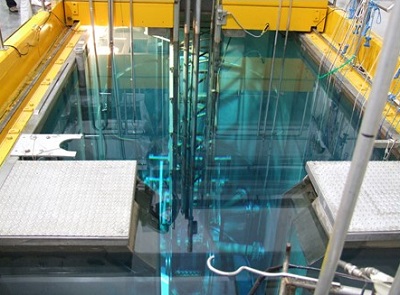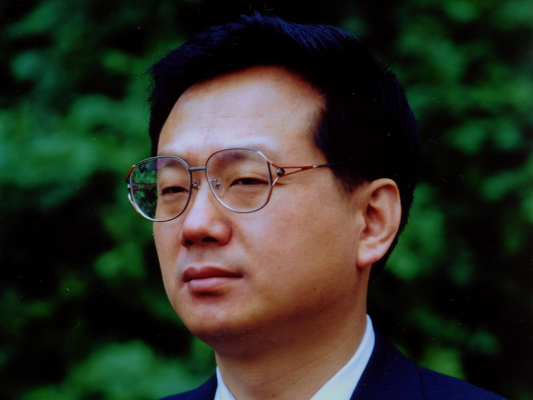The IEA-R1, the first nuclear reactor in Brazil and the first research reactor in Latin America, completed 60 years of uninterrupted operation. This was commemorated with an international workshop on the use of research reactors. The event was held from November 28 to December 1 2017 in the city of São Paulo, in the auditorium of the Nuclear and Energy Research Institute (IPEN), located on the main campus of the University of São Paulo (USP). According to the organizers, about 300 people from different countries participated in the event.
IEA-R1 is well known in Brazil for producing radioactive isotopes that are used in medicine, industry and agriculture, partially meeting the national needs. Examples are Iodine-131, produced in IEA-R1 since 1959 and used in the diagnosis and treatment of thyroid cancer, and Samarium-153, used as a palliative tool to treat pain in bone metastases.
In addition to providing these elements to hospitals, industries and other entities, the IEA-R1 has been used, since the beginning, in research in several areas, including the Materials area. This research filed uses beams of free neutron (neutrons that were separated from the nuclei of the atoms), generated in the nucleus of the reactor through the nuclear fission process. The interaction of the neutrons with the samples provides unique information on the structure and composition of the materials.
According to Frederico Genezini and Rajendra Narain Saxena, IPEN researchers and current and former manager of the Research Reactor Center (CRPq), respectively, neutrons have a very specific feature of interacting with matter. It is possible, through scattering, to carry out studies of crystalline structures, and since the neutron has a magnetic moment, it is also used to study the magnetic properties of materials.

Located at IPEN, the reactor is formed by a 9-meter deep pool of deep blue waters. This color is originated by the so-called Cherenkov effect, in which charged particles (in this case, ions generated by nuclear fission) cross the medium (in this case, water) at a higher speed than light in that medium, emitting the flashy blue radiation. The pool water is contained by 1 to 3 meter thick walls constructed of very hard concrete. The bottom of the pool houses the reactor core, in which uranium is bombarded with neutrons, generating nuclear fission reactions. As a result, the nuclei of the uranium atoms are divided into two, while two or three neutrons and a large amount of energy are released (that very strong energy that holds the protons and neutrons together in the nucleus of the atom). While in the nuclear plants the released energy is harnessed, in the research reactors the most important product is the neutrons, the reason why the reactor components aim at preserving the free neutrons.
Water and concrete around the core perform important safety functions that prevent harmful levels of radiation from passing into the vicinity of the pool, where researchers, the team responsible for the reactor and the visitors circulate (about 2,000 people visit the IEA-R1 every year).
The process of producing uranium for IEA-R1 is completely carried out in Brazil. The ore is extracted and processed in the state of Bahia, enriched to a little less than 20% at the Navy Technological Center in Iperó (São Paulo state), and finally packed inside the “fuel elements”, which are then placed in the core of the reactor. Brazil belongs to the group of only 12 countries that can enrich uranium.
Neutrons to investigate matter
Around the pool – at the bottom, the IEA-R1 reactor has 12 experimental stations, in which neutron beams extracted from the reactor are available to be used in conjunction with several experimental techniques.
According to Genezini and Saxena, at present only three of the stations have equipment installed: the high-resolution neutron diffractometer, real-time neutron imaging systems, and the experimental system for boron neutron capture therapy (BNCT). However, other stations are available – on demand – for the installation of instruments. The first two facilities are very useful for studying materials, and have advantages over equivalent equipment that uses X-rays instead of neutrons. According to Genezini and Saxena, the diffractometer allows studying crystallographic structures of materials that an X-ray diffractometer cannot always observe, besides the study of magnetic structures.
“While X-rays interact with matter through electromagnetic forces, neutrons basically interact via nuclear forces,” explains Reynaldo Pugliesi, an IPEN researcher responsible for neutron imaging equipment, designed and built at IPEN and installed in one of the IEA-R1 stations. For example, a sample of 1 cm2 analyzed at this experimental station can receive about 8 million neutrons per second.
Neutron imaging provides, without destroying or damaging the samples, two or three dimension images (the latter called neutron tomography) of details that would otherwise be imperceptible to the human eye. In particular, hydrogen-rich materials (such as oil, water, adhesives and rubbers) are particularly well captured in neutron imaging, even when encapsulated in metals such as steel, aluminum and lead. In fact, the neutrons can penetrate several inches into the metals and reveal what’s inside them. Also in this regard, neutron imaging is complementary to X-ray imaging: while neutrons reveal light materials that are behind heavy materials (such as a crepe tape inside an aluminum frame), X-rays reveal heavy materials behind lightweight materials (such as the bones in the hand).

The IEA-R1 is open to the scientific and business community through collaborations with CRPq researchers. “In this model we have many examples of institutions and companies that have used the IEA-R1 neutron beams and other instruments in the CRPq laboratories for measurements,” says Genezini. According to him, other models are not possible because there are no technicians dedicated to each instrument. “However, this model has proven to be inefficient and we are investing in instrumentation and regulations to make neutron beam equipment more accessible to people outside the organization,” concludes the CRPq manager.
History
The origins of the IEA-R1 nuclear reactor date back to the mid-1950s, when the United States, under President Dwight Eisenhower, launched the “Atoms for Peace” program, which disseminated and encouraged worldwide the peaceful use of nuclear technology. In this context, Brazil and the United States signed agreements aimed at the discovery and research of uranium in Brazil and the development and use in Brazil of radioactive isotopes for agriculture and industry. For this, it was necessary to have a nuclear reactor in the national territory.
Thus, in August 1956, the Brazilian government decreed the creation of the Institute of Atomic Energy (IEA), which would later be called IPEN, to supervise the construction and operation of the IEA-R1. The construction was carried out by the US company The Babcock & Wilcox Company, accompanied by a Brazilian team led by the first director of the IEA-R1, the Brazilian nuclear physicist Marcelo Damy de Souza Santos, also the founder of the IEA. In August 1957, the construction of the reactor was completed and, on September 16 of that same year, the reactor reached the necessary conditions to start operating. The inauguration ceremony of the IEA-R1 was held on January 25, 1958, with the presence of President Juscelino Kubitschek and the State Governor of São Paulo Jânio Quadros.
With the IEA-R1, Brazil was able to develop national knowledge to produce nuclear fuel, neutron research instruments and radioisotopes that have been used in health, agriculture and in various industries. The reactor was also used to produce, through the neutron-induced transmutation technique, semiconductors for electronic components that were exported. In addition, it was used to train reactor operators and to conduct academic work. According to Genezini and Saxena, more than 250 doctoral theses and master’s dissertations were defended during this period in the areas of Nuclear Physics and Condensed Matter, and more than a thousand scientific articles were published in indexed journals.
In the near future…
Another chapter in the history of research reactors in Brazil is being written. The Brazilian Multipurpose Reactor (RMB), a more modern nuclear reactor with 30 MW of power (versus 5 MW of IEA-R1) is underway. In conjunction with its experimental stations, the RMB will be a national laboratory open to the community for research and for production of radioisotopes, installed on a 2 million m2 site in Iperó (SP).
According to José Augusto Perrotta, technical coordinator of RMB, the reactor is still in the design phase. The conceptual and basic projects have already been completed, and the detailed project is being executed. In addition, the IBAMA (Brazilian Institute of Environment and Renewable Natural Resources) license has been issued, as well as the site license of CNEN. However, the initial timeline was affected by problems related to financial resources. “The Ministry of Science, Technology, Innovations and Communications did not release the resources in 2017,” says Perrota. “The project continued with only the resources designated in 2014. Every year without resources is a year behind schedule!” he laments.
More info
- CRPq – IPEN website: https://www.ipen.br/portal_por/portal/interna.php?secao_id=654
- Book “Imageamento com Nêutrons. 30 anos de atividades no IPEN-CNEN/SP”: http://repositorio.ipen.br:8080/xmlui/bitstream/handle/123456789/28166/23454.pdf?sequence=1&isAllowed=y
- Video about IEA-R1: https://www.youtube.com/watch?v=XGexZS0-tzA
- News article about RMB: http://sbpmat.org.br/en/reator-multiproposito-brasileiro-um-laboratorio-nacional-de-neutrons-para-a-comunidade-de-pesquisa-em-materiais/

